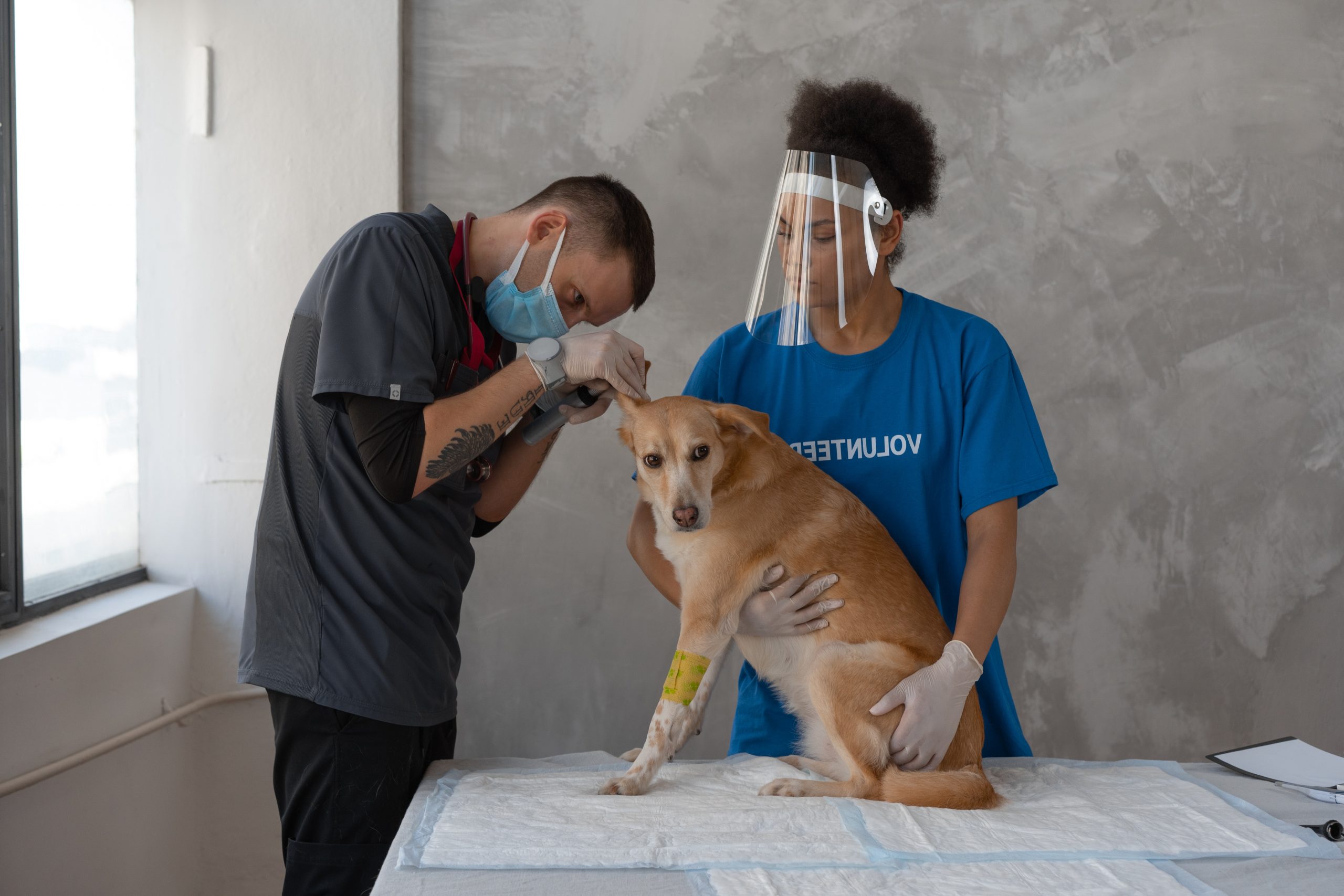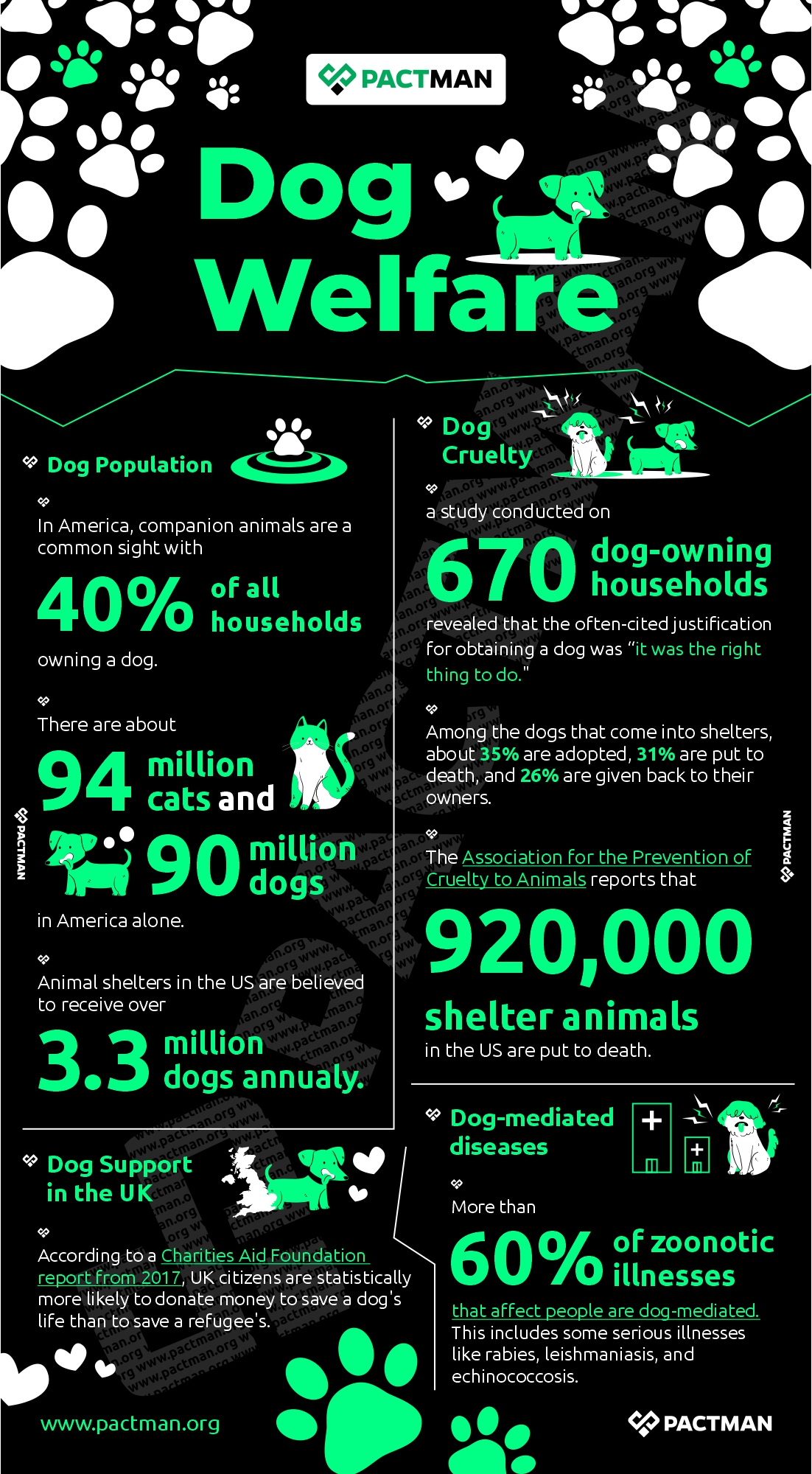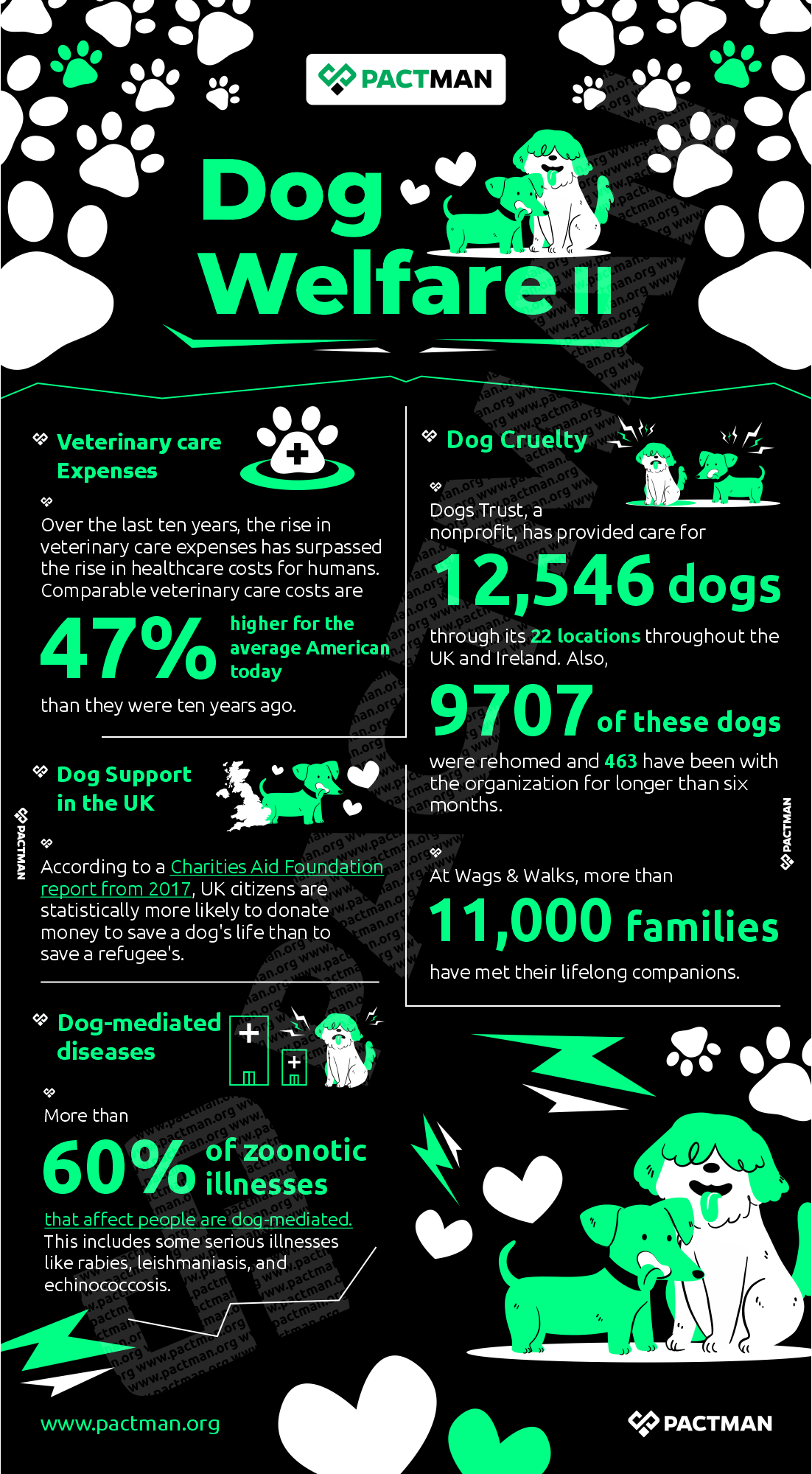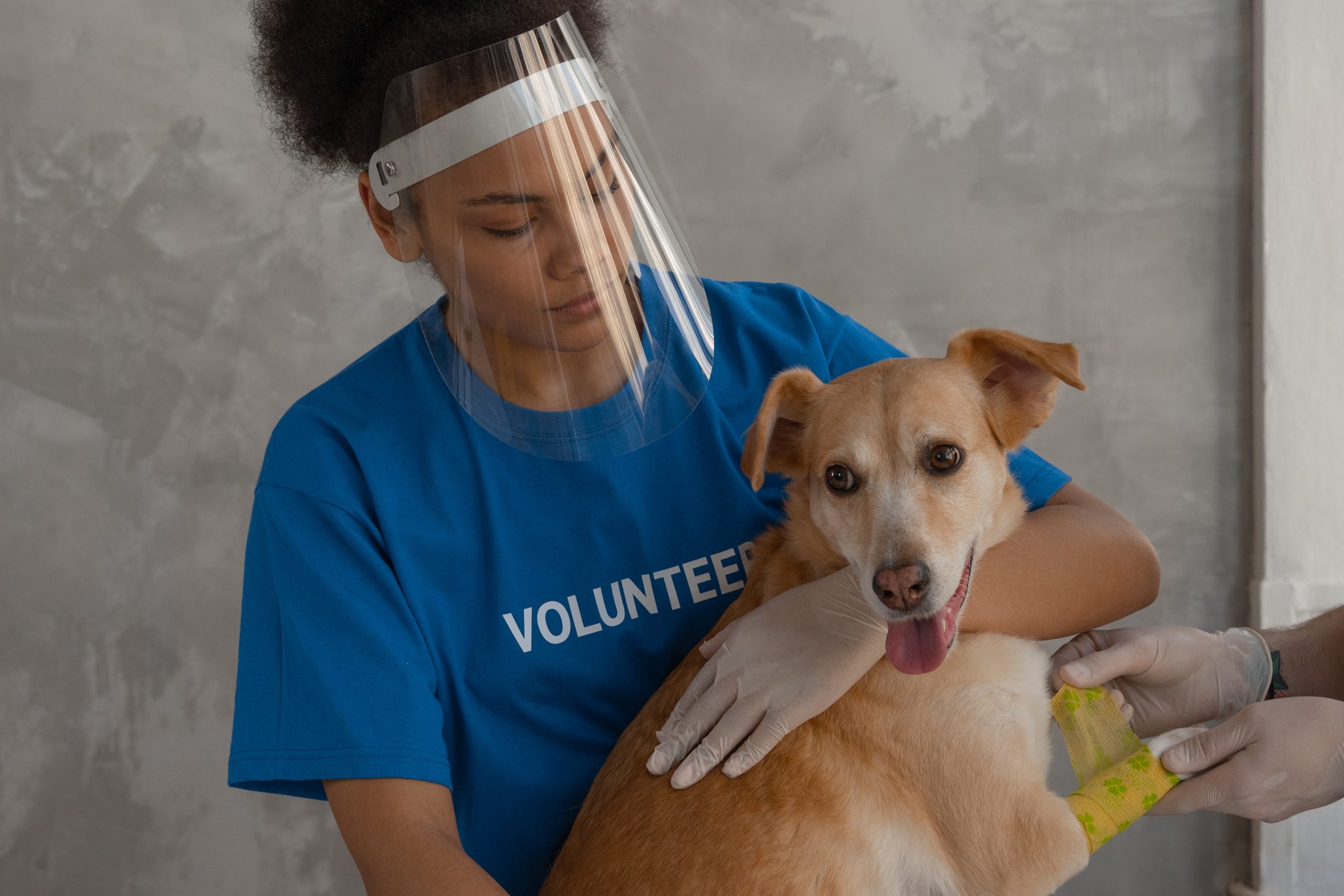I
Introduction
Animal sheltering and the establishment of dog charities have been a continuously developing field in Western society. The movement began following the establishment of the American Society for the Prevention of Cruelty to Animals in 1866 and the Royal Society for the Prevention of Cruelty to Animals in 1824.

Dog charities stand out for providing assistance to dog-related causes. By and large, this includes feeding and caring for lost dogs following a disaster, assisting with injuries, and helping homeless dogs. For the most part, animal shelters in America are primarily nonprofit organizations.
Despite their impact, there are a plethora of issues affecting dog charities across the globe. As public awareness of the issues grows, institutions and organizations continue to seek effective ways to use their specialized knowledge and abilities to support the broader animal welfare movement.
II
Critical Statistics on the Impact and Activities of Dog Charities
In this section, we will highlight important statistics on the impact of dog charities across various countries and their activities.
a. Dog Population
In America, companion animals are a common sight with 40% of all households owning a dog. Also, there are about 94 million cats and 90 million dogs in America alone. Animal shelters in the US are believed to receive over 3.3 million dogs annually.

b. Dog Cruelty
Animal overpopulation has been a major problem in the US. Among the dogs that come into shelters, about 35% are adopted, 31% are put to death, and 26% are given back to their owners. The Association for the Prevention of Cruelty to Animals reports that 920,000 shelter animals in the US are put to death.
Oftentimes, it is recommended that prospective pet owners choose dogs from shelters rather than those offered for sale by numerous organizations, such as animal protection groups and certain pet stores. Also, a study conducted on 670 dog-owning households revealed that the often-cited justification for obtaining a dog was “it was the right thing to do.”

c. Dog Support in the UK
According to a Charities Aid Foundation report from 2017, UK citizens are statistically more likely to donate money to save a dog’s life than to save a refugee’s.
d. Dog-mediated Diseases and health benefits of dogs
More than 60% of zoonotic illnesses that affect people are dog-mediated. This includes some serious illnesses like rabies, leishmaniasis, and echinococcosis. Also, scientists are beginning to acknowledge the importance of dogs in enhancing mental health.
III
Challenges Faced by Dog Charities Across the Globe
In this section, we will consider the major challenges that persist among dogs and dog charities across the globe.

a. Financial Constraint
Dog charities work to enhance the general well-being of dogs while offering essential services to the community. However, a common problem faced by these organizations is a lack of funding. The lack of funding strategies for operational stability and survival has left some leaders of nonprofit animal shelters struggling financially.
Consequently, the high intake levels and financial restrictions at nonprofit animal shelters in the US make funding a significant challenge. While an enormous amount of funding is required, insufficient support remains.
The issue of underfunding comes with a detrimental impact. One of such is forced closure while others resort to euthanasia or minimal care supplies. Also, the inadequacy of certain nonprofit leaders of animal shelters to develop fundraising strategies has led to financial constraints.
b. Volunteer Burden
Volunteers are seen as important contributors to the success of dog charities. To begin with, these individuals enable organizations to save money and provide animals with essential care, like walking and feeding.
Even more, most dog charities are primarily run by volunteers, except for a few larger rescues that employ staff because of the high administrative and labor demands placed on them. However, due to the sector’s financial constraints, many volunteers view themselves as full-time employees even though they work as volunteers.
The retirement of seasoned volunteers, who are essential to the operation of rescues, and burnout among core volunteers have also constituted a major concern.
c. Adoptions Issues
One of the major adoption-related concerns among dog charities is how to get as many dogs out to good homes as quickly as possible. Hence, to ensure the best possible outcomes for both people and animals, there is a need to stop animals from being turned into the shelter system.
Initiatives to keep dogs out of shelters and in their original homes whenever possible are receiving a lot of attention. Likewise, adoption is still a crucial pragmatic and moral concern, even though it is not the only possible happy ending for all animals that enter the system.
For most dog charities, adopting large dogs—generally defined as those weighing 35 pounds or 16 kilograms—is always more difficult. This is because larger breeds tend to elicit negative public perceptions as city ordinances prohibit the ownership of certain breeds. Other known issues with adoption include facility-level housing restrictions and worries about behavior, safety, and compatibility with other residents.
d. Medical Conditions
In addition to serving as a platform for the adoption of unwanted dogs, dog charities often offer an array of medical treatments. However, the ability of organizations to provide these services is based on their resources, location, and risk tolerance.
Oftentimes, it is challenging for dog charities to determine what cases should be treated and which ones should not. Hence, one crucial component that still presents a difficulty for all shelters is efficient and practicable diagnosis of illness.
Furthermore, cost is another important consideration when it comes to shelter testing. More investigation into affordable testing is required for a wide range of illnesses. This is because dog charities frequently lack the resources for what would be regarded as “standard” care in private practice once a disease has been identified.
While some shelters choose to euthanize rather than provide reduced care, others decide to provide whatever care they can within their moral bounds.
e. Access to care
Several factors contribute to the issue of access to care. This includes expense, a lack of transportation, and the uneven allocation of veterinary resources.
In the Access to Veterinary Care Coalition report, cost was found to be the most frequent obstacle to receiving veterinary care. Over the last ten years, the rise in veterinary care expenses has surpassed the rise in healthcare costs for humans. Comparable veterinary care costs are 47% higher for the average American today than they were ten years ago.
Currently, the biggest threat to companion animal welfare in the US today is thought to be the declining number of people seeking care for their pets as a result of this growing cost. Animal shelters will benefit greatly from additional research that discovers economical, practical, and long-term ways to reduce the cost of veterinary care.
IV
Impact of Dog Charities
In this section, we will outline the various impacts of dog charities and how these organizations contribute to the well-being and welfare of these canine creatures.

a. Dog charities serve as the first line of defense for animals
Animals are frequently left injured and stranded during natural disasters like earthquakes, floods, hurricanes, and wildfires. These rescue workers put animals at the forefront despite putting in a lot of effort to save families from such destruction. A large number of animals would be left to fend for themselves if there were no local animal rescue groups on the ground.
Additionally, dog charities provide food, water, blankets, and toys for the displaced dogs. Hence, it is essential that people donate to their local dog charities during times of need. This is one great way to save the lives of as many animals as possible.
b. Dog Charities enhance animal well-being
Supporting dog rescues and charitable organizations is crucial as it contributes to the improvement of pet health. The battle for survival is just getting started for many dogs who are saved from cruel or dangerous circumstances. These dogs might have experienced physical abuse, neglect, or malnourishment. Not to mention, they might have been exposed to parasites or illnesses. Hence, before they can begin to lead a normal, happy life, they might need to recover from serious infections.
These dogs get to receive the care, attention, and patience they require to heal. Dog charities assist in the rehabilitation of these mistreated animals so they are prepared for their new life in a caring home. In addition, they offer foster care, surgeries, and physical therapy. As we all know, the road to recovery is costly. Hence, these dog rescues depend on community support to enable them to offer abused animals the care they need.
c. Dog charities Ensures dog safety
The best—and frequently the only—line of defense for animals is animal charities. Animal charities push for stronger animal protections in laws and policies because their missions drive them and not money.
Additionally, these charities increase public awareness of the suffering caused to animals by humans. Animals would continue to be at the mercy of profit-driven industries in the absence of animal charities.
Animal welfare organizations such as dog charities educate the public and inspire them to consider the effects of their lifestyle decisions on animals. They also employ a variety of strategies in the course of their work. This includes:
- Activism at the grassroots level
- Public events and outreach
- Lawsuits brought against companies that sell animals
- Engaging in political activism to support legislation that benefits animals
d. Dog charities can help foster community engagement
Volunteering at local animal rescues is another way for people to get involved and meet new people who are as passionate about helping dogs as they are. This strengthens communities and improves the mental health of individuals. Animal rescues provide an opportunity for people to assist others and concentrate on the good things they are doing rather than focusing on their issues.
By organizing activities that owners and their pets can enjoy together, animal charities also contribute significantly to the development of dog-friendly communities.
e. Reverses the animal population decline
Animal shelters are spearheading community efforts to stem the tide of unwanted dogs by being proactive rather than reactive. They do this through their aggressive spay and neuter campaigns, outreach programs, in-house workshops, partnerships with local veterinarians, and low-cost voucher initiatives.
f. Dog charities help with discovery and development
A visit to an animal shelter is an opportunity to learn a plethora of new information. There are plenty of ways to learn and develop while visiting dog charities. This includes educational programs for both adults and children, practical volunteer opportunities, and chances to help with marketing, social media, or word-of-mouth information dissemination.
V
Top Dog Charities Globally
In this section, we will consider some of the most outstanding dog charities to donate to.

a. Dogs Trust
Dogs Trust is known for its motto which is the vow to never put down a healthy dog. Though the organization wants more for dogs, preventing euthanasia is the cornerstone of its beliefs.
According to Dogs Trust, all dogs should lead full, secure, and contented lives. To achieve this, the nonprofit collaborates with people: those who currently own dogs, those who provide care for them, and those who will in the future.
Through its 22 locations throughout the UK and Ireland, Dogs Trust has provided care for 12,546 dogs. Also, 9707 of these dogs were rehomed and 463 have been with the organization for longer than six months.
The nonprofit strives to guarantee that legislators always have the welfare of dogs in mind throughout Westminster, Scotland, Wales, Northern Ireland, and the European Union. Since 1891, Dogs Trust has been at the forefront of improving the future for dogs and their owners.
b. Sochi Dogs
Sochi Dogs is a global nonprofit organization that works to rescue stray and homeless dogs all over the world. With headquarters in the United States, the international organization provides dog rescues, rehabilitation programs, and a haven for stray and abandoned dogs.
Also, the nonprofit has a dynamic group of problem-solvers, dog lovers, and activists who work tirelessly every day to create a better and more compassionate future for all dogs.
Sochi Dogs believe in the ability to change. In addition, the organization rescues dogs from hunger, wandering, accidents, and street menace. To provide them with on-the-ground support, Sochi Dogs collaborates with volunteer groups and rescue organizations in South Korea, Poland, Russia, Latvia, and Ukraine.
Sochi Dogs arranges spay/neuter clinics, offers resources for emergency rescue operations and veterinary care, and places dogs in homes throughout the US and EU.
c. Guide Dogs of America
Guide Dogs of America transforms lives by partnering with service dogs. The organization provides service dogs for veterans and children with autism. Also, the nonprofit works to train, raise, and breed guide dogs for the blind and visually impaired.
Guide Dogs of America is situated on a stunning 7.5-acre campus in Los Angeles and serves a wide spectrum of people from the US and Canada. Essentially, the goal is to change people’s lives by forming alliances with service dogs. The nonprofit is at the forefront of helping its clients and their service dogs develop a deep and fruitful relationship.
Also, the nonprofit matches facility dogs with employees in the legal, medical, and educational fields. Their highly skilled dogs are dependable companions that help boost people’s confidence, mobility, and independence. All programs and services, including lodging and board, individualized instruction, transportation, and postgraduate support, are provided to recipients at no cost.
d. Wags and Walk
Wags and Walks is a 501(c) nonprofit organization that aims to lower the number of dogs put to death in nearby shelters. In addition, the non-profit raises public awareness of how amazing rescue dogs make wonderful pets. At Wags & Walks, more than 11,000 families have met their lifelong companions.
The main goal of Wags and Walks is to support medical dogs, mamas, and puppies who are frequently neglected and in danger because of overcrowding, and incorrectly stereotyped bully breeds. Dogs are not chosen by the organization according to their breed, size, or age. Rather, they are chosen on a case-by-case basis. This takes into account both their potential for success in the right home and the organization’s ability to assist.
Lesley Brog started Wags & Walks in 2011 after witnessing the horrific amount of defenseless dogs put to death in LA shelters as a result of overcrowding. Wags & Walks, which has locations in Los Angeles and Nashville, aims to dispel the myth that rescue dogs are bad and reduce the number of animals put to death in neighborhood shelters. Essentially, the organization demonstrates that amazing puppies of all breeds, sizes, and personalities can be rescued.
e. Mission K9 Rescue
Mission K9 Rescue is on a mission to rescue, reunite, rehome, rehabilitate, and repair any retired working dog that has assisted humans. This includes any working dog that might require their help, including CWDs and MWDs. The nonprofit believes that these dogs’ retirement is something they have earned. Hence, Mission K9 Rescue is dedicated to saving them.
The organization is headquartered in Houston, Texas, and also maintains satellite offices in Los Angeles and San Antonio. From these locations, Mission K9 Rescue helps and supports Working Dogs all around the world.
By and large, the organization exists to serve retired and retiring military working dogs, contract working dogs, and other dogs that serve in any capacity that fits within the parameters of its mission.
Conclusion
To sum up, dogs in need are supported by innumerable dog charities and rescues worldwide. These organizations help dogs find loving homes, receive the necessary medical attention, and be rescued from abusive or dangerous situations. Without a doubt, this is a vital service even to society.
In addition, these nonprofits work to maintain financial stability while fulfilling the organization’s mission. Hence, leaders of animal shelters are in charge of making financial choices that will provide operational stability, carry out the shelter’s mission of housing stray animals, tend to them, and locate them in loving permanent homes.
If you enjoyed reading this article, please share your comments and suggestions with us at the bottom of this post.


